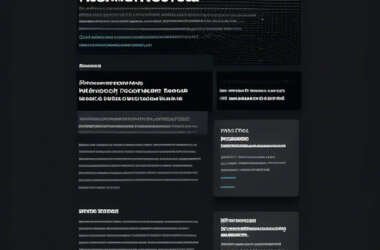In today’s digital landscape, the importance of cybersecurity trends cannot be overstated. As cyber threats evolve, organizations must stay informed about the latest developments in threat detection, data protection, and incident response strategies. The HackenPost RSS Feed serves as a valuable resource for professionals seeking insights into emerging vulnerabilities, security protocols, and best practices. By exploring these trends, businesses can better prepare for potential attacks and safeguard their sensitive information. Understanding the dynamics of cybersecurity is essential for maintaining a robust defense against the ever-changing threat landscape.
The HackenPost RSS Feed delves into the intricate world of cybersecurity, offering a comprehensive overview of the latest innovations and challenges in the field. This platform highlights critical issues such as ransomware attacks, phishing schemes, and the rise of artificial intelligence in security measures. By analyzing real-time data and expert opinions, the feed provides a unique perspective on how organizations can adapt to the shifting paradigms of digital safety. Additionally, it emphasizes the significance of proactive measures, such as vulnerability assessments and employee training, in mitigating risks. Ultimately, the HackenPost RSS Feed serves as a crucial tool for anyone looking to navigate the complexities of cybersecurity in an increasingly interconnected world.Sure! Please provide the text you would like me to use to create the subheadings and content.
| Trend | Description | Impact | Examples |
|---|---|---|---|
| Increased Ransomware Attacks | Ransomware attacks have surged, targeting businesses and individuals, encrypting their data and demanding payment for decryption. | Significant financial losses and operational disruptions for victims. | Colonial Pipeline attack, JBS Foods breach. |
| Supply Chain Vulnerabilities | Cybercriminals are exploiting weaknesses in supply chains, affecting multiple organizations through a single breach. | Widespread impact on multiple businesses and increased scrutiny on third-party vendors. | SolarWinds hack, Kaseya VSA attack. |
| Remote Work Security Challenges | The shift to remote work has created new security challenges, including unsecured home networks and personal devices. | Higher risk of data breaches and unauthorized access to sensitive information. | Phishing attacks targeting remote workers, insecure VPNs. |
| Zero Trust Security Model | The adoption of the Zero Trust model, which assumes that threats could be internal or external, is becoming more prevalent. | Enhanced security posture by minimizing trust assumptions and continuously verifying user identities. | Implementation of multi-factor authentication, micro-segmentation. |
| AI and Machine Learning in Cybersecurity | Organizations are increasingly using AI and machine learning to detect and respond to threats more effectively. | Improved threat detection capabilities and faster response times. | Automated threat hunting, anomaly detection systems. |
| Regulatory Compliance and Data Privacy | Stricter regulations regarding data privacy and cybersecurity are being enforced globally, requiring organizations to comply. | Increased operational costs and the need for robust compliance strategies. | GDPR in Europe, CCPA in California. |
RESULT
The topic of Cybersecurity Trends highlights the evolving landscape of threats and defenses in the digital world. As cybercriminals become more sophisticated, organizations must adapt to new challenges such as increased ransomware attacks, vulnerabilities in supply chains, and the security implications of remote work. The adoption of a Zero Trust security model is gaining traction, emphasizing the need for continuous verification of user identities. Additionally, the integration of AI and machine learning technologies is transforming how organizations detect and respond to cyber threats. With the rise of regulatory compliance requirements, businesses are compelled to prioritize data privacy and security measures. Overall, staying informed about these trends is crucial for organizations to protect their assets and maintain trust in an increasingly interconnected environment.









